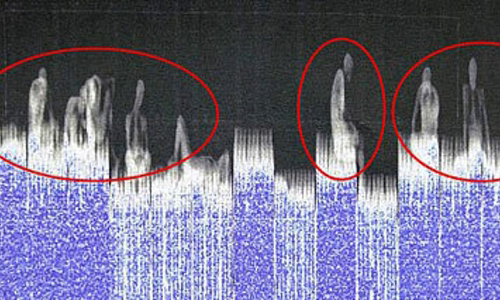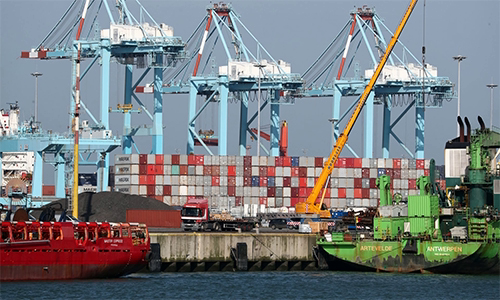Director of the Zeebrugge port, Belgium admitted that all containers passing through the port were not scanned for thermal images to detect people inside.
The Port of Zeebrugge in northern Belgium is the departure point for a container of 39 people carried by ferry across the Manche Strait to the Port of Purfleet, Essex County of England on the night of October 22. By dawn on October 23, all the people in the container were found dead.

X-ray scanner detects migrants in a container in Dover port, UK Photo: DailyMail
The tragedy shocked public opinion and raised questions about security inspections in the port of Zeebrugge. In an interview with the Guardian on October 25, Joachim Coens, managing director of Zeebrugge port, said that the area was not equipped with thermal imaging scanners and that only 1% of the containers through here were X-ray scanned.
Coens said the container holds 39 people passing through a Zeebrugge port cargo terminal, operated by C.RO. Containers that have been sealed when entering the port will not be opened for inspection.
"We do everything we can to prevent others from entering the station, this is the main task. You can see the station has a fence, barbed wire and is locked. The station is a closed area. "he said.
Zeebrugge port representative said the trucks on arrival will be checked with CO2 detectors and professional dogs to see if there are people inside. However, if it is a refrigerated container, port staff will not check it.
"When we see there's no one around, the container is closed and sealed, there's no need to open it. If the container of meat, dairy, or the like is opened, the goods can be rancid," Coens said. .
Port Director Peter Degroote said police and customs officers occasionally checked containers randomly with X-ray scanners, but he estimates that only about 1% of the containers passing through the port are inspected in this way. "They are not looking for people inside but focus on the goods. That is the mission they are assigned," Degroote said.
The port operator Zeebrugge spends more than $ 1.1 million a year to provide security for the station that handles up to 7,000 containers a day, Coens and Degroote said. Many security guards and six service dogs are deployed to protect the station.

Container at the port of Zeebrugge, Belgium Photo: PA
Coens said local police had to deal with migrant groups almost every day trying to cut down the fence to break into the station. "They are small groups, mainly from conflict areas in North Africa, the Middle East and Eritrea. If illegal migrants are discovered by port guards, they will be taken to the police." .
The 39-person container, after being brought to the Port of Zeebrugge, has been loaded onto a ferry, making a long journey across the Manche Strait to the British port of Purfleet at 0:30 on October 23. Northern Ireland driver Mo Robinson, 25, drove a container truck to leave the port and discovered all the people inside had died at 1:40.
After arresting and interrogating Robinson, Essex police, England arrested two more suspects in the town of Warrington and one suspect at Stansted airport on charges of human trafficking and manslaughter.
Port Director Deegroote said Zeebrugge was just a link in the tragedy that killed 39 people in the container, while Coens said he would closely monitor the investigation to see what happened and what measures could be taken. now.
"Whenever an incident occurs, we meet with the police and customs and follow their instructions," Coens said.
The British authorities are examining the bodies of the victims for identification and think the picture of the case may change during this process. Forensic experts will observe clothing, jewelry, passports, identification documents and other factors to collect related clues.



 DeanTiiDezorder
DeanTiiDezorder







